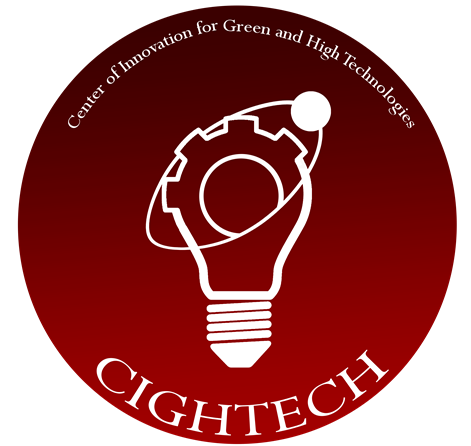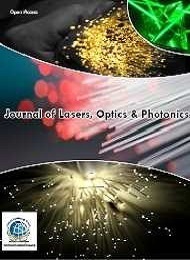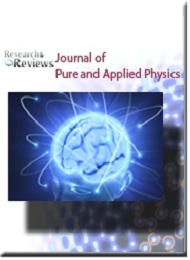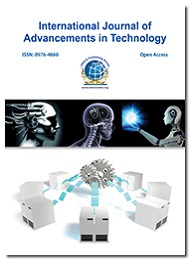Theme: Inspiring the Innovation Through Laser & Optics
Laser Photonics 2019
Conference Series LTD warmly invites you all to the “European Meet on Lasers, Optics & Photonics" during October 18-19 at Paris, France. The Theme of the conference is “Exploring the Innovations and Advancement of Laser, Optics & Photonics’’. The Committee is looking forward to organize an remarkable meeting with new and interesting sessions and to meet new people where one can share one’s subject and passion. At Laser Photonics 2019 one can acquire new ideas, technologies that will be very useful for expanding the knowledge in the concerned field and propagating the new concepts to improve oneself and also our professional career.
In the present scenario the Optics and Laser systems are found all over the place. Billions of dollars spent on research and development; with increasing number of applications covering all the medical, industry, military/weaponry, communication and technology. Furthermore, the Lasers and Optics technologies create everyday consumer products such as printers, displays, discs, cameras and eyeglasses and the optical-fibre is crucial to telecommunications. To develop both academia and industrial research we would like to invite all the members/exhibitors across the globe to join the conferences under one roof to discuss the latest advancements and innovations in the field of Laser, Optics and Photonics.
The Laser Photonics 2019 Conference in Paris will also be common platform to experience B2B Meetings, Panel Discussions, Q&A sessions, Industry expert Interactions, Roundtable meetings, Best Poster awards, Best Oral presentation awards, Young Researcher Forums (YRF), E-poster presentations, Video presentations by the experts from both Industry & Academic. The Laser Photonics 2019 will feature on different tracks cover both academics and Industrial aspects. Around 45 countries are participating to hear latest researchers and to brand their products by exhibitions.
“Exploring the Innovations and Advancement of Laser, Optics & Photonics’’ In the 20th century Optics research is creating a huge impact on the nation developing advanced technologies and using in different applications.
So be a part of the team which shares the same vision and provides a prism of possibilities for the future. Join us at Paris in Laser Photonics 2019.
Laser Photonics 2019 conference gives a platform to globalize the research by connecting a dialogue between industries and academic organizations and knowledge transfer from research to industry. European Meet on Laser, Optics & Photonics aims in proclaiming the knowledge and share new ideas amongst the professionals, industrialists and students from research areas of Optics, Photonics and all the related disciplines to share their research experiences and indulge in interactive discussions and special sessions at the Laser Photonics 2019 Conferences.
Conference Highlights:-
- Physicals Optics
- Quantum Optics
- Laser Optics
- Optical Networking
- Application of Optics & Beyond
- Laser Physics
- Maser, Laser & Beyond
- Operating principle of Laser
- Medical Application of Laser and Optics.
- History Of Photonics
- Bio Photonics
- NANO Optics and NANO Photonics
- Emerging Fields in Photonics
- Roadmap for Photonics
- Optics and Photonics for Energy
The Laser Photonics 2019 will serve as a hub for participants from all over the globe from various sectors with one vision. The participants will utilize the scope of extending their skills, work on basic and significant applications by attending the summit.
However, the key audience sector for Laser Photonics 2019 includes-
- Eminent Scientists/Research Professors in the field of Lasers, Optics & Photonics.
- Junior/Senior research fellows in Lasers, Optics & Photonics, Students.
- Directors of Photonics companies.
- Photonics Engineers.
- Members of different Lasers, Optics and Photonics associations.
- Medical Professionals related to Surgery.
Track 01
Optical Imaging and Sensing
The technique of using some applications to have a non-invasive look into the body as it is done by the use of ionizing radiation, optical imaging, which basically uses a special kind of light which has the properties of photons in order to obtain the images of the body organs and the tissues which include their molecular structure and cellular structure. The main applications of these images are for the clinical purposes where the doctors would be using them to diagnose a patient and also being used by scientists for research activities.
-
3D Printed Optics and Additive Photonic Manufacturing
-
Digital Optics for Immersive Displays
-
Unconventional Optical Imaging
-
Optical Micro- and Nano metrology
-
Optics, Photonics and Digital Technologies for Imaging Applications
-
Optical Sensing and Detection
-
Imaging in Biology and Medicine
Track 02
Optics in Astronomy and Astrophysics
These are the optics which belong to the branch of optics and photonics which uses light controlling components to get the images of the celestial objects in the space. The perfect example for this would be a telescope. Astronomical optics has a combination of well machined lenses and mirrors in order to reduce any image distortion and sensitive sensors to detect low levels of light.
-
IR applications
-
Aperture Synthesis
-
Interferometry
-
Adaptive Optics for Astronomy and Applications
Related Societies:
SPIE International Society for Optics and Photonics, European Optical Society, Lasers & Electro-Optics Society, Optical Society of America, Laser Society of Japan, Photonics Society of Chinese Americans, Australian Laser Association, Photonics Society of India, The Chinese Optical Society (COS), Photonics Society of India and Indian Laser Association, Photonics Association of Singapore, Optical Society of Korea, Optical Society of Japan,Laser Institute of America
Track 03
Laser absorption Spectroscopy
Spectroscopy is the analysis of interaction between portion of the electromagnetic spectrum and matter. Spectroscopy involved the visible spectrum of light, but where the gamma, x-ray, and UV spectroscopy also are valuable techniques. It involves in any interaction between light and matter, including absorption, emission, scattering, etc.
Spectroscopy helps astronomers to detect the composition, temperature, density, and motion of an object. Infrared spectroscopy helps in identifying the atoms and molecules in the object. The red shift or blue shift in a spectral line tells how fast the object is receding from Earth or coming toward it.
Track 04
Trending technologies in Photonics and Lasers
Photonics begins with the invention of the laser. It is the study of physical science of light detection, generation. The fundamental element of this technology is photon. Photonics applications use the photons in the same way electronic devices use the electrons. As we know that light travels 10 times faster than the electricity then the devices which are running on light have more advantages than the devices which are running on the electricity.
Track 05
Application of Lasers and photonics in Industries
Applications of lasers and Photonics in industrial are cutting, manufacturing processes and tools for material processing through welding, are alot. Lasers and Photonics are using more in the industries like Mechanical engineering, tools manufacturing, sciences and many other medical fields and research are just a few examples. And still this development is progress as innovation promotes growth and development.
Track 06
Virtual world of Photonics
Head-up showcases project data and admonitions straightforwardly into a driver's field of vision. As of not long ago, confounded optics have controlled and developed the expanded reality (AR) projections on the windshield. Weakness: The frameworks permit just a little measure of glare and take up excessively space in the officially swarmed dashboard. Car parts provider Continental, with its related organization, the US startup DigiLens Inc, is taking another way, additionally dependent on photonics. Rather than controlling the light with optics, it's tweaked with extraordinarily organized optical waveguides. The creative framework decreases the establishment space to a 6th of the present size and furthermore copies the field of vision. The scaled down HUDs can even be incorporated into motorbike and pilot head protectors to make AR data noticeable straightforwardly in the field of vision.
DigiLens replaces focal points and mirrors with fine diffractive structures produced using a holographic photopolymer, which was created by the organization. These Bragg gratings are connected with a reasonable ink fly printing procedure to waveguides that are streamlined for red, green, and blue light. The trap: The polymer, or rather the extent of its diffraction, is electrically switchable. Therefore the switchable Bragg gratings (SBGs) work like an optical "framework on a chip," which diffracts, shapes, broadens, and at last activities the light put away in the optical wave-controls on to the objective surface. It's bolstered in by an information module comprising of a Pico projector and a RGB LED module.
Track 07
Micro photonics
Micro photonics is a branch of technology that deals with directing light on a microscopic scale. It is used in optical networking. Micro photonics uses no less than two dissimilar materials with an extensive differential record of refraction to crush the light down to a little size. As a rule, for all objectives and purposes all of micro photonics depends on Fresnel reflection to control the light. In the event that the photons live basically in the higher list material, the repression is because of aggregate inside reflection. On the off chance that the repression is expected many circulated Fresnel reflections, the gadget is named a photonic precious stone. There are a wide range of kinds of geometries utilized in micro photonics including optical waveguides, optical micro cavities, and Arrayed waveguide gratings.
Photonic precious stones are non-directing materials that reflect different wavelengths of light superbly. Such a gem can be mentioned to as an ideal mirror. Different gadgets utilized in micro photonics incorporate micro mirrors and photonic wire waveguides. These devices are utilized to "form the stream of light", a well-known expression for depicting the objective of micro photonics.
Track 08
Biophotonics
The word bio photonics signifies a mix of science and photonics, with photonics being the science and innovation of age, control, and location of photons, quantum units of light. Photonics is identified with hardware and photons. Photons assume a focal job in data advances, for example, fiber optics the manner in which electrons do in hardware.
Bio photonics can likewise be depicted as the "advancement and use of optical strategies, especially imaging, to the investigation of organic atoms, cells and tissue". One of the primary advantages of utilizing optical procedures which make up bio photonics is that they protect the trustworthiness of the natural cells being examined
Bio photonics has hence turned into the built up general term for all methods that reduced with the association between natural things and photons. This alludes to discharge, identification, retention, reflection, change, and formation of radiation from bio molecular, cells, tissues, living beings and biomaterials. Regions of utilization are life science, drug, farming, and natural science. Like the separation among "electric" and "gadgets" a distinction can be made between applications, for example, Therapy and medical procedure, which utilize light primarily to exchange vitality, and applications, for example, diagnostics, which utilize light to energize matter and to exchange data back to the administrator. Much of the time the term bio photonics alludes to the last sort of utilization.
Track 09
Nano Photonics
Nano photonics or Nano-optics is the investigation of the conduct of light on the nanometer scale, and of the connection of nanometer-scale objects with light. It is a part of optics, optical designing, electrical building, and nanotechnology. It regularly (yet not solely) includes metallic segments, which can transport and concentrate light by means of surface Plasmon polarization.
The expression "Nano-optics", simply like the expression "optics", as a rule alludes to circumstances including bright, noticeable, and close infrared light (free-space wavelengths from 300 to 1200 nanometers).
Track 10
Fiber Optic Lasers
Fiber Optics lasers are divided into optical fiber nonlinear effect laser, rare earth doped fiber laser, single crystal fiber laser, fiber arc lasers etc. Among them, rare earth doped fiber lasers are very mature, such as doped with low levels of rare-earth halides to make it capable of amplifying light. It was widely used in optical fiber communication systems. High fiber lasers are mostly used in military, laser processing, medical and other fields.
Optics is the branch of physics which involves the behavior and properties of light, including in its interactions with matter and the construction of the instruments that use or detect it. Optics usually describes the behavior of visible, ultraviolet, and infrared lights. Because light is an electromagnetic wave, other forms of the electromagnetic radiation such as X-rays, microwaves, and radio waves exhibit similar properties.
Track 11
3D Laser Triangulation
3D laser technology is a technology that allows sensors to examine the surroundings. Laser triangulation systems have an ultimate operating point where its reflected spot is in the center of the detector. A system with 3D laser triangulation has limited range but high accuracy and relative indifferent to illumination conditions and surface texture effects. This technology has multiple applications in various fields like industry, scanning and inspection medicine, criminal investigation.
Related Societies:
SPIE International Society for Optics and Photonics, European Optical Society, Lasers & Electro-Optics Society, Optical Society of America, Laser Society of Japan, Photonics Society of Chinese Americans, Australian Laser Association, Photonics Society of India, The Chinese Optical Society l (COS), Photonics Society of India and Indian Laser Association, Photonics Association of Singapore, Optical Society of Korea, Optical Society of Japan, Laser Institute of America
Track 12
Laser communications
Optical communication is one of the motive powers in developing laser diode technology. These systems are wireless connections through the atmosphere which works similarly to the fiber optics, the carriers used for transmission signal is generated by laser diode. Optical communication uses light as the transmission medium.
Laser based free space communications and sensing playing a enlighten detection schemes. Laser are using for satellite communication which can potentially transmit a much higher volume of data than radio.
Related Societies:
SPIE International Society for Optics nd Photonics, European Optical Society, Lasers & Electro-Optics Society, Optical Society of America, Laser SOptics aociety of Japan, Photonics Society of Chinese Americans, Australian Laser Association, Photonics Society of India, The Chinese Optical Society (COS), Photonics Society of India and Indian Laser Association, Photonics Association of Singapore, Optical Society of Korea, Optical Society of Japan, Laser Institute of America.
Track 13
Laser controlled areas
Laser is an acronym for light that stimulate emission of radiation. Laser is created when the electrons in crystals or gases absorb energy from and become excited. Laser controlled are the areas in which laser operation occurs and therefore safety requirements are met and regulations are implemented. Lasers used within a laser controlled areas vary with energy and wavelength of the light.
Related Societies:
SPIE International Society for Optics and Photonics, European Optical Society, Lasers & Electro-Optics Society, Optical Society of America, Laser Society of Japan, Photonics Society of Chinese Americans, Australian Laser Association, Photonics Society of India, The Chinese Optical Society (COS), Photonics Society of India and Indian Laser Association, Photonics Association of Singapore, Optical Society of Korea, Optical Society of Japan, Laser Institute of America.
Track 14
Laser detectors
Device that operates by interaction of incident radiation with semiconductor based material in order to produce an electrical signal or by other means, to interact with calorimetric devices which produce a thermally induced current. The response of the detection devices will vary by the source wavelength, intensity and energy.
Related Societies:
SPIE International Society for Optics and Photonics, European Optical Society, Lasers & Electro-Optics Society, Optical Society of America, Laser Society of Japan, Photonics Society of Chinese Americans, Australian Laser Association, Photonics Society of India, The Chinese Optical Society (COS), Photonics Society of India and Indian Laser Association, Photonics Association of Singapore, Optical Society of Korea, Optical Society of Japan, Laser Institute of America.
Track 15
Laser Photochemistry
The study concerned with the stimulation of chemical activity by laser light as a result of the absorption of photons by a molecule. Interaction of laser source with a molecular or atomic species. Investigation of excited state transitions results in a photochemical product that provides experimental information.
Related Societies:
SPIE International Society for Optics and Photonics, European Optical Society, Lasers & Electro-Optics Society, Optical Society of America, Laser Society of Japan, Photonics Society of Chinese Americans, Australian Laser Association, Photonics Society of India, The Chinese Optical Society (COS), Photonics Society of India and Indian Laser Association, Photonics Association of Singapore, Optical Society of Korea, Optical Society of Japan, Laser Institute of America.
The global market for lasers in 2010 was $7.1 billion and is expected to reach $7.9 billion in 2011. The market is expected to rise at a compound annual growth rate (CAGR) of 9.5% and reach nearly $12.5 billion by 2016.The contribution of the Americas region will change from 29.5% in 2011 to 27.5% in 2016. This market segment is estimated to reach nearly $2.3 billion in 2011 and $3.4 billion by 2016, a CAGR of 7.9% over the five year period. The contribution of the Asia-Pacific (APAC) region will change from 41.6% in 2011 to 44.1% in 2016. The segment is expected to reach $3.3 billion in 2011, and should reach nearly $5.5 billion in 2016, a CAGR of 10.8% between 2011 and 2016.According to a new market research report “Laser Technology Market by Type (Solid - YAG laser, Fiber laser, Thin Disk Laser, Liquid, Gas - Argon Ion Laser, Excimer, CO2 and Others), Application (Medical, Industrial, Military, Research, Consumer, and Others), and Geography - Trends and Forecast to 2013 - 2020” the total market is expected to grow to$17.06 billion by 2020, at an estimated CAGR of 7.58% from 2014 to 2020.
Conference Highlights
- Optical Imaging and Sensing
- Optics in Astronomy and Astrophysics
- Laser absorption Spectroscopy
- Trending technologies in Photonics and Lasers
- Application of Lasers and photonics in Industries
- Virtual world of Photonics
- Biophotonics
- Micro Photonics
- Nano Photonics
- Fiber Optic Lasers
- 3D Laser Triangulation
- Laser communications
- Laser detectors
- Laser Photochemistry
To share your views and research, please click here to register for the Conference.
To Collaborate Scientific Professionals around the World
| Conference Date | November 25-26, 2019 | ||
| Sponsors & Exhibitors |
|
||
| Speaker Opportunity Closed | Day 1 | ||
| Poster Opportunity Closed | Click Here to View | ||
Useful Links
Special Issues
All accepted abstracts will be published in respective Our International Journals.
- Journal of Lasers, Optics & Photonics
- Research & Reviews: Journal of Pure and Applied Physics
- Journal of Physics & Astronomy
Abstracts will be provided with Digital Object Identifier by








